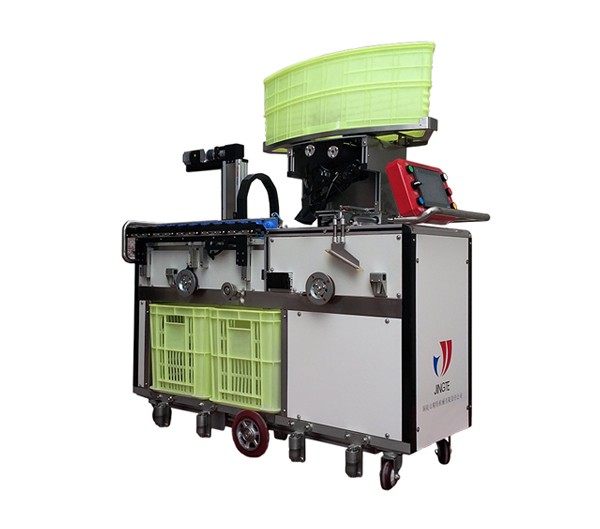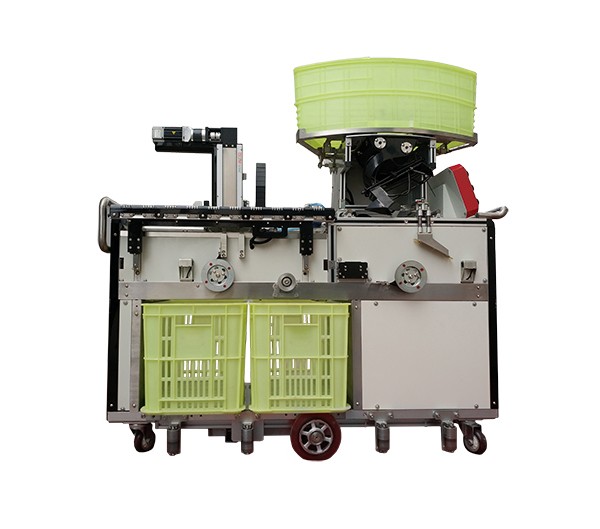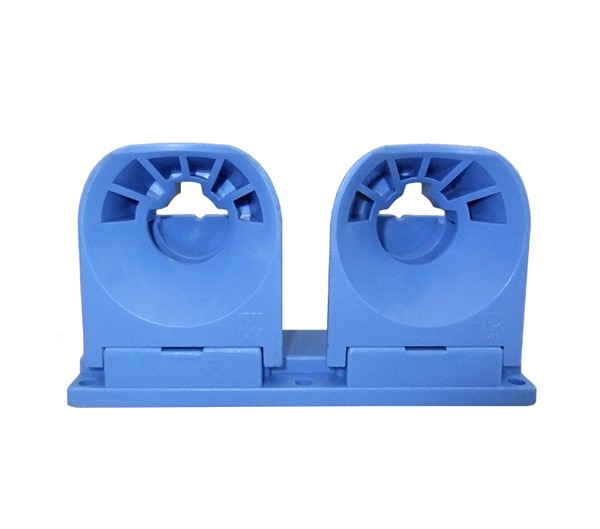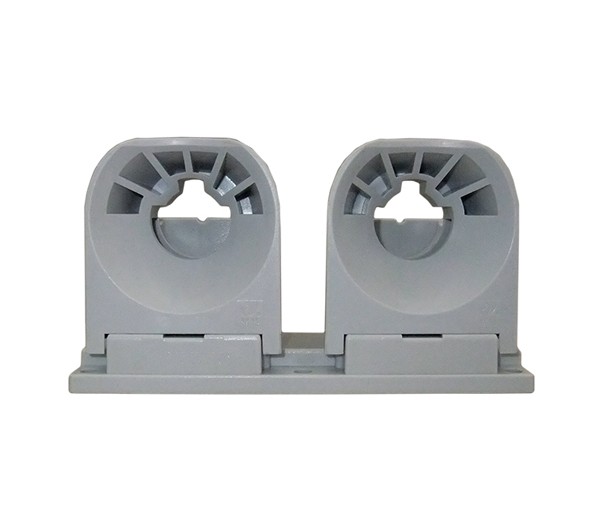When traditional industries encounter intelligent manufacturing
來(lái)源:未知 發(fā)布時(shí)間:2018/6/20 0:00:00
Recently, the Chinese Academy of Engineering (CAE) released the project "Research on the Development Strategy of Intelligent Manufacturing in China's Textile Industry" in Beijing. The development strategy and roadmap of Intelligent Manufacturing in China's textile industry are clarified. It is proposed that the overall level of Intelligent Manufacturing in China's textile industry will reach the international advanced level in the next 5 to 10 years. Intelligent manufacturing and technological innovation will support the textile industry towards ecology, green, low-carbon and high-end, and further expand to the emerging industries, so as to further improve the economic, social and national defense security of China's textile industry. The strategic goal of "contribution" clarifies the key tasks and paths for the development of Intelligent Manufacturing in China's textile industry. This article will take you to listen to the voices of experts at the conference first.
Traditional industrial thinking mode needs to be changed
It is an indisputable fact that China's competitive advantage as a big low-cost manufacturing country is gradually losing. With the rising cost of labor and other factors and the influence of other factors at home and abroad, the profit growth rate of textile enterprises has decreased from 43.9% in 2011 to 5.3% in 2015.
"In the next 5-10 years, intelligent manufacturing is a reliable guarantee for the sustainable development and high-end of China's textile industry." Sun Jinliang, academician of the Chinese Academy of Engineering, said. However, in his research, he found that a large number of textile enterprises still remain in traditional industrial thinking. Equipment is not interconnected, process is not interoperable, product is not interactive, organizational structure is multi-level, manufacturing scale, product homogeneity, high factor cost, weak competition.
"Common technology lays the foundation for the development of Intelligent Manufacturing in textile industry." Yu Jianyong, academician of the Chinese Academy of Engineering, said that in order to successfully transform the textile industry into intelligent manufacturing, the first problem to be solved is to realize equipment interconnection and eliminate information islands. "In the manufacturing process, through the automatic collection, statistics, analysis and feedback of various data generated by the machine, the results are used to optimize the manufacturing process and greatly improve production efficiency." Yu Jianyong said.
Machine Replacement Highlights the Bottleneck of Talents and Science and Technology
Machine replacement is an obvious sign of the development of textile industry from traditional manufacturing to intelligent manufacturing. But it is not necessary for machines to change people. "At present, the most urgent need is for talents at all levels who have the knowledge and ability to integrate textile manufacturing technology with Internet technology." He Yanli, vice president of China Chemical Fiber Industry Association, said frankly.
Many years ago, textile industry needed excellent locomotive blockers, machine repairmen and marketing salesmen. With the advancement of Intelligent Manufacturing in textile industry, enterprises urgently need robotic craftsmen, network engineers, automatic control engineers and other multi-level talents who are familiar with the characteristics of textile process.
"The lack of such talents is also reflected in the field of education." He Yanli said that there are some problems in the training of relevant professionals, such as the aging curriculum, the lack of interdisciplinary, and the disconnection between professional education and the actual needs of enterprises.
In addition to the shortage of talents, the scientific and technological resources to promote the development of Intelligent Manufacturing in textile industry are also weak.
At present, the annual R&D investment intensity of chemical fiber manufacturing, textile, clothing and apparel industries belonging to the textile industry in China is less than 1%, which is in the middle and lower reaches of 32 manufacturing industries.
"In theory, all enterprises have R&D investment of 3% of sales revenue, but the R&D investment is mainly used for the introduction and update of hardware facilities, and the investment for innovation and R&D of key technologies related to intelligent manufacturing is generally low." Yu Jianyong said.
On the one hand, the development of computer, network and equipment manufacturing promotes the development of manufacturing technology in textile industry from automation and digitalization to intellectualization; on the other hand, the development of Internet economy also promotes the transformation of textile industry to a new mode of service-oriented manufacturing.
Statistics show that in 2016, China's textile and apparel e-commerce transactions totaled 4.45 trillion yuan, 2.4 times as much as in 2012. Online marketing of textile and apparel products is becoming more and more mature.
"Mass customization of new generation textile and apparel products, driven by user's personalized needs and participated by users in the whole process, has become a new momentum for the development of textile industry." Chen Wenxing, president of Zhejiang University of Technology, said.
"Intelligent manufacturing in textile industry, not only includes digital technology represented by computer digital control throughout the product life cycle, but also focuses on breaking through the realization of network manufacturing under the conditions of ubiquitous perception and interconnection." Sun Jinliang said. He expects to lead China's textile industry from labor-intensive, resource-consuming to technology-intensive, from manufacturing to creation, speed to quality, product to brand development, and take the lead in China's traditional industries to high-end.
Traditional industrial thinking mode needs to be changed
It is an indisputable fact that China's competitive advantage as a big low-cost manufacturing country is gradually losing. With the rising cost of labor and other factors and the influence of other factors at home and abroad, the profit growth rate of textile enterprises has decreased from 43.9% in 2011 to 5.3% in 2015.
"In the next 5-10 years, intelligent manufacturing is a reliable guarantee for the sustainable development and high-end of China's textile industry." Sun Jinliang, academician of the Chinese Academy of Engineering, said. However, in his research, he found that a large number of textile enterprises still remain in traditional industrial thinking. Equipment is not interconnected, process is not interoperable, product is not interactive, organizational structure is multi-level, manufacturing scale, product homogeneity, high factor cost, weak competition.
"Common technology lays the foundation for the development of Intelligent Manufacturing in textile industry." Yu Jianyong, academician of the Chinese Academy of Engineering, said that in order to successfully transform the textile industry into intelligent manufacturing, the first problem to be solved is to realize equipment interconnection and eliminate information islands. "In the manufacturing process, through the automatic collection, statistics, analysis and feedback of various data generated by the machine, the results are used to optimize the manufacturing process and greatly improve production efficiency." Yu Jianyong said.
Machine Replacement Highlights the Bottleneck of Talents and Science and Technology
Machine replacement is an obvious sign of the development of textile industry from traditional manufacturing to intelligent manufacturing. But it is not necessary for machines to change people. "At present, the most urgent need is for talents at all levels who have the knowledge and ability to integrate textile manufacturing technology with Internet technology." He Yanli, vice president of China Chemical Fiber Industry Association, said frankly.
Many years ago, textile industry needed excellent locomotive blockers, machine repairmen and marketing salesmen. With the advancement of Intelligent Manufacturing in textile industry, enterprises urgently need robotic craftsmen, network engineers, automatic control engineers and other multi-level talents who are familiar with the characteristics of textile process.
"The lack of such talents is also reflected in the field of education." He Yanli said that there are some problems in the training of relevant professionals, such as the aging curriculum, the lack of interdisciplinary, and the disconnection between professional education and the actual needs of enterprises.
In addition to the shortage of talents, the scientific and technological resources to promote the development of Intelligent Manufacturing in textile industry are also weak.
At present, the annual R&D investment intensity of chemical fiber manufacturing, textile, clothing and apparel industries belonging to the textile industry in China is less than 1%, which is in the middle and lower reaches of 32 manufacturing industries.
"In theory, all enterprises have R&D investment of 3% of sales revenue, but the R&D investment is mainly used for the introduction and update of hardware facilities, and the investment for innovation and R&D of key technologies related to intelligent manufacturing is generally low." Yu Jianyong said.
However, the state invests relatively little in the research of intelligent manufacturing technology in textile industry, and lacks the corresponding scientific and technological innovation base and service platform. To this end, Yu Jianyong suggested that textile manufacturing should be the main body and cross-disciplinary organizations should jointly cooperate with relevant forces to tackle key scientific and technological problems.
New model of turning to service-oriented manufacturing
On the one hand, the development of computer, network and equipment manufacturing promotes the development of manufacturing technology in textile industry from automation and digitalization to intellectualization; on the other hand, the development of Internet economy also promotes the transformation of textile industry to a new mode of service-oriented manufacturing.
Statistics show that in 2016, China's textile and apparel e-commerce transactions totaled 4.45 trillion yuan, 2.4 times as much as in 2012. Online marketing of textile and apparel products is becoming more and more mature.
"Mass customization of new generation textile and apparel products, driven by user's personalized needs and participated by users in the whole process, has become a new momentum for the development of textile industry." Chen Wenxing, president of Zhejiang University of Technology, said.
"Intelligent manufacturing in textile industry, not only includes digital technology represented by computer digital control throughout the product life cycle, but also focuses on breaking through the realization of network manufacturing under the conditions of ubiquitous perception and interconnection." Sun Jinliang said. He expects to lead China's textile industry from labor-intensive, resource-consuming to technology-intensive, from manufacturing to creation, speed to quality, product to brand development, and take the lead in China's traditional industries to high-end.




